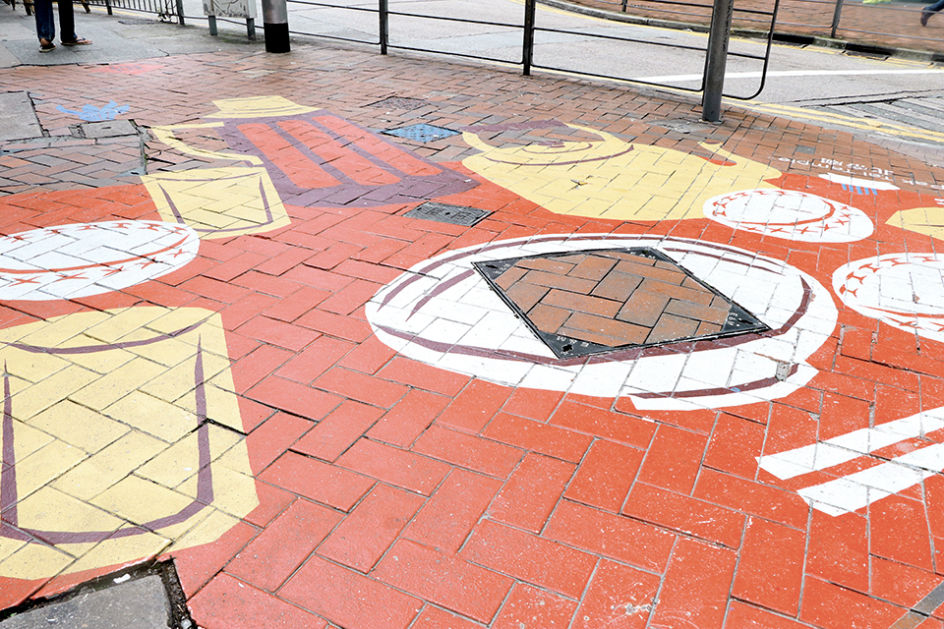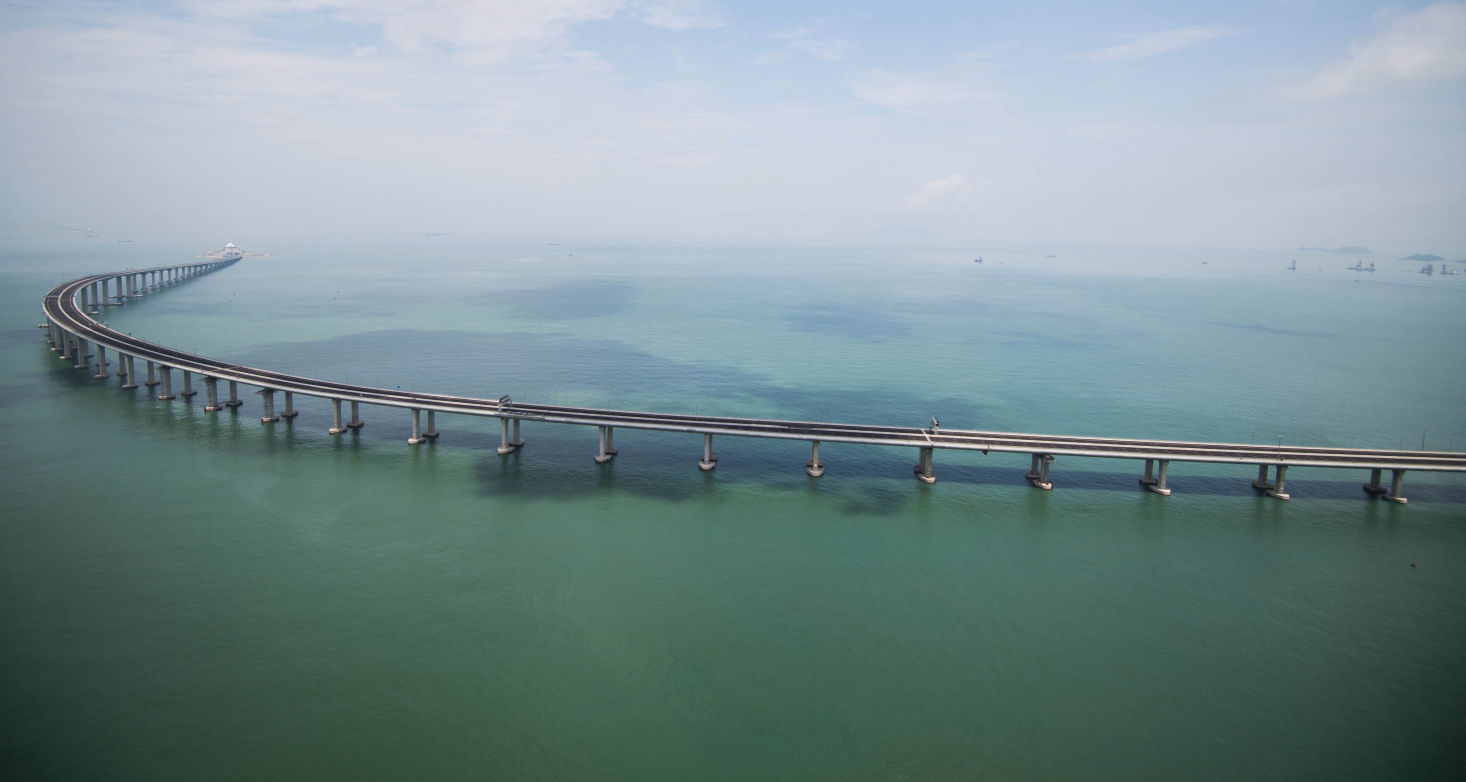We use cookies to ensure you get the best browsing experience. By continued use, you agree to our privacy policy and accept our use of such cookies. For further information, click FIND OUT MORE.
Text and Photos
By JANNIELYN ANN BIGTAS,
GMA News
May 30, 2019
Since the ‘90s, Hong Kong has been a popular shopping destination among Filipinos.
Landing into the Hong Kong International Airport, notice: construction sites are perennially on view. The city is constantly changing. These days, Hong Kong has also become a foodie haven, thanks to restaurants — and even roadside eateries — that have made it into a constellation of Michelin stars.
Perhaps so should your Hong Kong routine, as well?

Trams are a great way to see the city.
The MTR is great but have you tried Hong Kong’s trams? Not only are the 114-year-old open top tram system an excellent way to get to your destination, it also offers a cool viewpoint of Hong Kong that doubles as opportunity to learn about its history.
The TramOramic Golden Ticket gives tourists two privileges: (1) the 1-Hour Hong Kong sightseeing trip, complete with authentic audio tales in eight languages and (2) the 2-day unlimited access to Hong Kong Tramways’ network which will allow for a hop-on hop-off arrangement.
Tickets for adults cost HK$95 and HK$45 for children over 4 years old.
An hour-long ride will give you a 360-degree view of Hong Kong, from the old Western District’s British buildings through Central’s urban landscape of modern skyscrapers.

The Blue House cluster in Wan Chai.
Beyond the neon lights and ginormous billboards are murals, installation pieces, interesting architecture and even a few works of AR (augmented reality).
For three years from 2018 to 2021, the hip neighborhoods of Wanchai and Sham Shui Po will feature the Hong Kong tourism project Design District Hong Kong (#ddHK), an open-air gallery that shows off its authentic culture.
There are four tours to experience the neighborhoods:
The #ddWalker Tour highlights the architectural gems, featuring the oldest surviving post office, the Lee Tung Avenue, the award-winning Blue House Cluster (which comes with the GMA stamp of approval!), among others.


The BeHere AR Tour makes use of technology to give visitors a unique experience.
The BeHere AR Tour meanwhile features new media works by Japanese artist Masaki Fujihata. She took inspiration from old photos of Hong Kong, which were then reenacted in a studio, and then retranslated into 3D digital figures.
Using the integrated camera of the BeHere mobile app, tourists can actually include themselves in the frame with the 3D figures.

Five local typography designers put their art on the red folding gates of the Kong Wan Fire Station.
The #ddSnap Tour takes you around Wan Chai, led by National Geographic Wheelock Youth Photo Competition Jeremy Cheung.
Finally, the #ddStory Tour showcases the craftsmanship of Wan Chai.
You can choose to explore on your own or you can join a guided tour, which is still free until June 22, by the way.


1: Five pieces of the interactive art installation pavilion located at the Fleming Road Garden.
2: Designer Yao Cheuk Ni visualizes to make the Queen’s Road East and Stone Nulla Lane into a homey neighborhood welcoming visitors with an artwork piece of a dining table.

The Xiqu Centre opened in January 2019.
The newly constructed Xiqu Centre in Tsim Sha Tsu is a feast for the senses. The team behind the striking architecture is Revery Architecture and Ronald Lu & Partners. They took inspiration from traditional Chinese lanterns blending it with contemporary elements. It took them eight years to build the performing arts and culture hub.
The building houses five luxurious spaces for productions and cultural events: the Atrium, the Grand Theatre, the Tea House Theatre, the Seminar Hall and the Studios.

Inside the Tea House Theater, audiences were treated to pu-er tea and five kinds of dimsum snacks: barbecue pork pastry, almond pastry, mushroom and crab meat spring roll and lotus seed and nut pudding.
The Tea House Theater, one of two theaters serving authentic Cantonese culture. Inside the theater, each seat has a table affixed on it with a built-in metal cup holder to keep your cup of tea warm throughout the 90-minute performance.
Yes, audiences are served tea and snacks, perhaps an effort to bridge Hong Kong’s British past and its Cantonese traditions. On offer are a barbecue pork pastry, almond pastry, mushroom and crab meat spring roll and lotus seed and nut pudding to accompany the pu-er tea.

The Tea House Theatre at the Xiqu Centre has a 200-seat capacity.
The show opened with a “Nanyin” or a Cantonese narrative singing, explaining what the audience is about to see, followed by a wind and percussion music or Chinese orchestra before the Cantonese Opera Excerpt Performance began.
It is designed to recreate and revive the original vibe of Hong Kong’s early 20th century tea houses and restaurants where the locals spend time to delight themselves with hot tea while they watch opera singers.
It may be performed in Cantonese but English subtitles were thoughtfully flashed on rectangle screens above and beside the stage.
Ticket prices range from HK$318 to HK$368 which includes performance, tea and dimsum. For more information visit https://www.westkowloon.hk/en
The other theme park may be a tad more popular these days but Hong Kong’s original Ocean Park has a few more tricks up its sleeve.
Apart from thrilling rides, the park in Wong Chuk Hang Road, Aberdeen allows for friendly encounters with spotted seals.
A group only accommodates four people per encounter. And encounters offer more than just hugging, feeding, and making friends with the seals. A trainer will share vital information about the creature: their behavior, the ongoing climate threats to their habitat.


The author has an encounter with seals.
To address concerns by animal rights advocates: seals actually live up to 40 years in the care of humans. In the wild, they have shorter lifespans and living only up to 20 years.
The seal encounter happens everyday from 11:00 am to 12:15 pm for HK$1,180 per person (not including admission tickets and photos).
Those who want to join experience should apply two days in advance through their official website.

The Hong Kong-Zhuhai-Macao is 20 times longer than San Francisco’s iconic Golden Gate Bridge. Photo: HKTB
Visiting Macau from Hong Kong is a common move among tourists and residents, but now there’s a new way to go about it. Check out the Hong Kong-Zhuhai-Macao bridge. The 55-kilometer stretch is 20 times longer than San Francisco’s iconic Golden Gate Bridge and designed to last 120 years.

Riding a bus through it will take just about 45 minutes — faster than going from Quezon City to BGC in rush hour traffic. It’s open 24 hours, so traveling from Hong Kong to Macau and back has become much easier.
Macau is famous for its glitzy casino scene, but what is often overlooked is infinitely more interesting: Old Macau and its preserved buildings from the past. Look for the hexagon-shaped details of the windows: they are actually made from oyster shells.


Within the Old Macau area is the mini Manila town, where small-scale grocery stores selling Filipino goods abound. You’ll also find a good ol’ panederia called “Anak” selling pandesal and pan de coco, in its confines

An unexpected treat: pan de coco and other Pinoy treats in a bakery in Macau.
Stroll through Old Macau, and you’ll find the scene suddenly changing; from seeing early Chinese houses, you’ll see yourself surrounded by Portuguese architecture and then again by huge swanky casinos. With the vibe continually changing, you’ll forget that you’re actually just, give and take, about a two-hour plane ride away from Manila.




Travel through time with old Chinese houses, Portuguese architecture, and modern casinos, all in a short walk.

One of Wynn Palace’s lobby art installations designed by NY-based artist Preston Bailey.
Entering Wynn Palace usually require guests to take a cable car, or in Wynn Palaca parlance, the “Sky Cab.” And upon entering, a giant pink floral egg sculpture, sitting on a bed of flowers, right smack in the middle of the gold-detailed lobby, will greet visitors. As if that wasn’t enough, the egg opens, releasing a colorful bird flapping its wings. Created by New York-based artist Preston Bailing, a total of seven kinetic sculptures are scattered all over the hotel’s lobby entrances. These designs change every six weeks.
SHARE THIS STORY